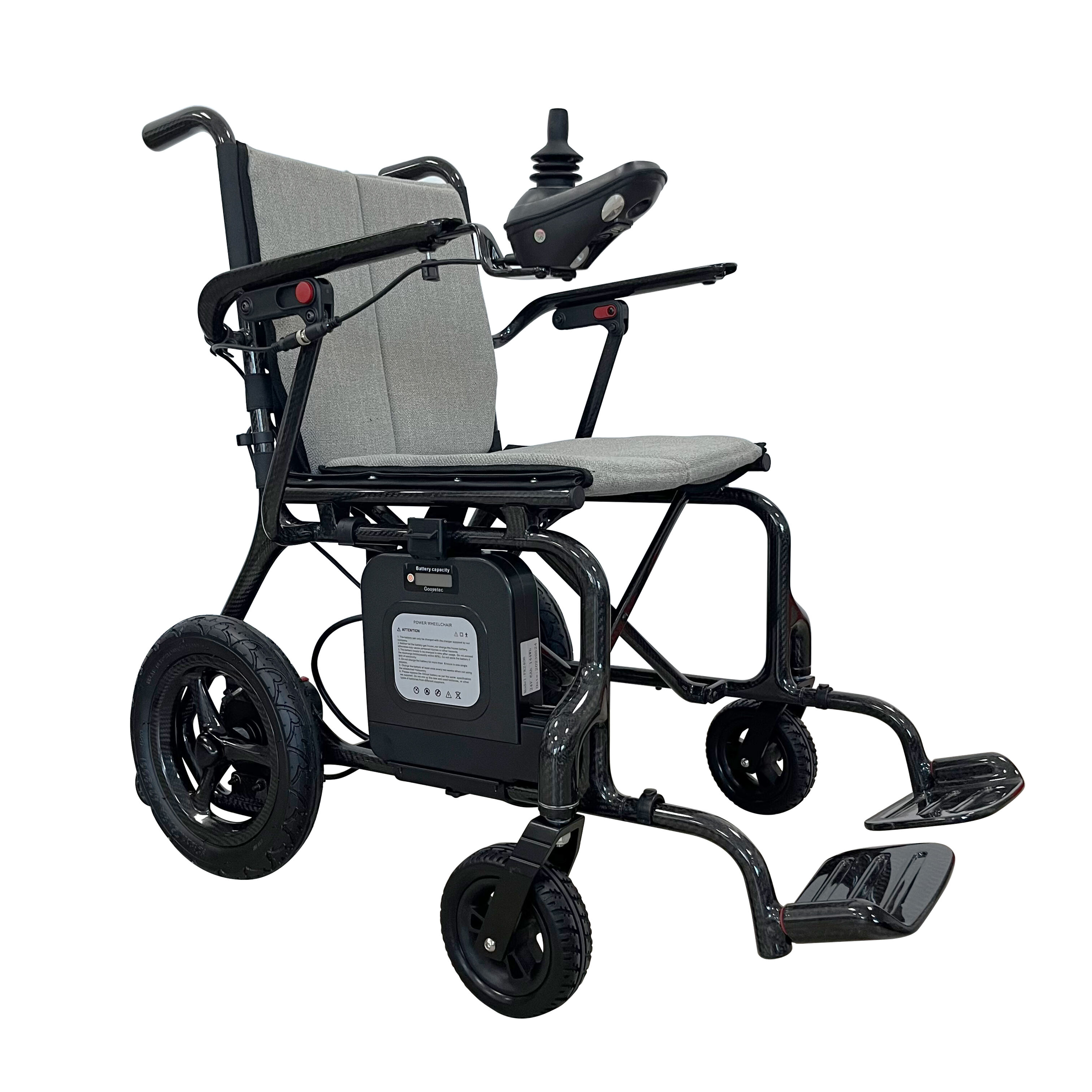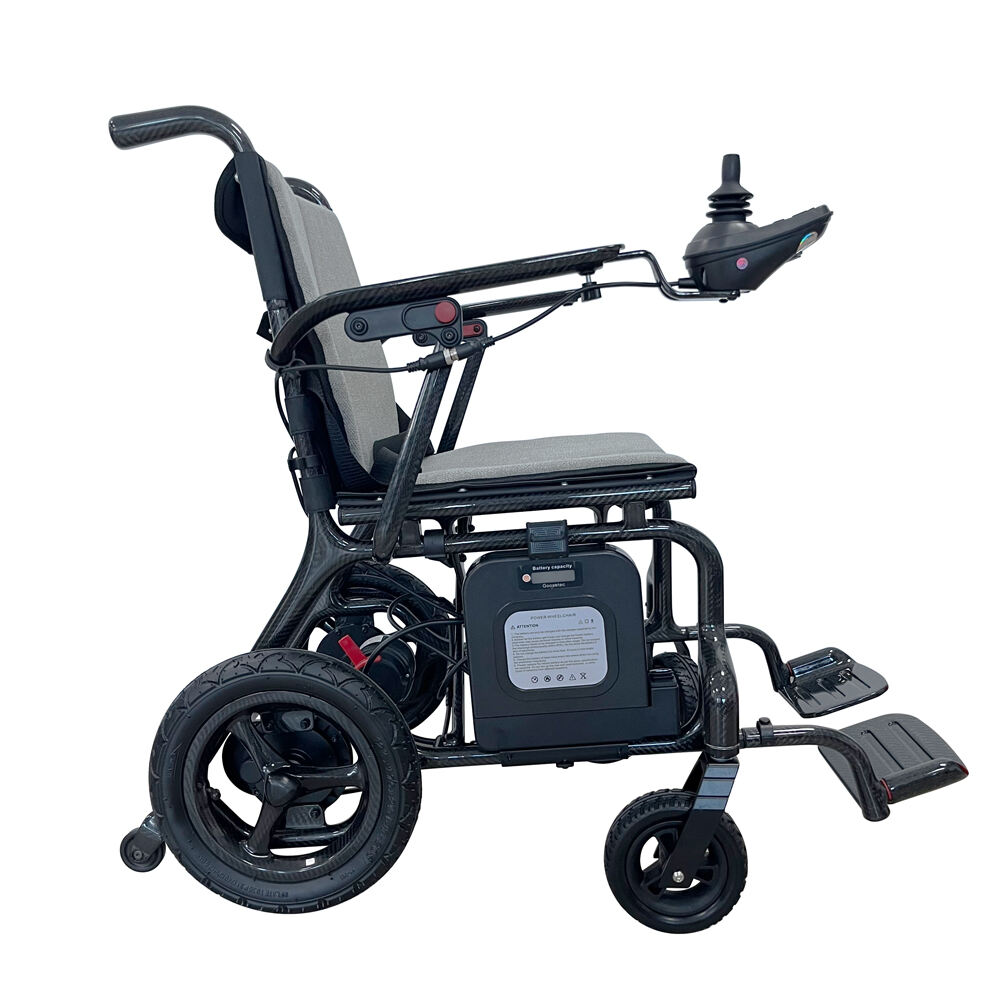In the mobility aids industry, product innovation is increasingly centered on balancing durability, performance, and cost-effectiveness. Traditional wheelchairs, whether manual or electric, have long relied on steel or aluminum frames. While these materials provide strength, they also contribute to excessive weight and higher long-term maintenance costs. With the global population aging rapidly and healthcare expenditure rising, the demand for advanced solutions that reduce lifecycle costs has never been more pressing.
The Carbon Fiber Electric Wheelchair represents a significant leap forward in this landscape. By integrating carbon fiber frames with electric drive systems, these wheelchairs offer a lightweight yet highly durable alternative. According to recent healthcare equipment research, lightweight mobility solutions reduce maintenance expenses by up to 25% while increasing patient satisfaction scores. Suppliers are therefore turning toward advanced materials like carbon fiber to meet both performance expectations and long-term financial considerations.
Durability is not only about longevity but also about minimizing frequent part replacements, lowering energy consumption, and ensuring consistent performance in various environments. The Carbon Fiber Electric Wheelchair addresses these needs through its combination of lightweight construction, enhanced battery technology, and material resilience. For suppliers, this translates into reduced warranty claims, improved market reputation, and better cost efficiency across distribution networks.
In an industry increasingly focused on sustainability, the adoption of the Carbon Fiber Electric Wheelchair also reflects an alignment with global trends toward energy-efficient, long-lasting mobility devices. As healthcare systems and private buyers prioritize products that balance upfront investment with reduced lifecycle costs, suppliers see a clear strategic advantage in positioning carbon fiber solutions as their premium offering.
The Carbon Fiber Electric Wheelchair stands out due to a combination of structural, mechanical, and functional innovations. Its core feature is the carbon fiber frame integrated with an electric drive system. Unlike steel or aluminum wheelchairs, carbon fiber significantly reduces overall weight while maintaining superior strength. This lightweight construction enhances portability and maneuverability without compromising power. At the same time, the electric drive system ensures strong propulsion, enabling smooth navigation across urban and rural terrains. For suppliers, this dual advantage translates into a durable product that appeals to both institutional and private buyers.
Another defining element is the use of high-performance lithium batteries. These batteries extend operational range considerably, allowing the Carbon Fiber Electric Wheelchair to travel longer distances on a single charge. Durability is also reflected in the battery’s lifecycle, with modern lithium technology offering hundreds of reliable charging cycles before degradation. Longer battery life not only enhances user satisfaction but also reduces replacement frequency, cutting long-term operational costs for suppliers and healthcare providers alike.
Additionally, the Carbon Fiber Electric Wheelchair leverages the inherent properties of carbon fiber materials to deliver exceptional impact resistance and structural stability. Carbon fiber is known for its resilience under stress, providing consistent performance even in demanding conditions. This makes the wheelchair highly reliable for everyday use, from hospital corridors to outdoor environments. Suppliers benefit from this feature as it reduces return rates and improves confidence among distributors and end-users.
Comfort and ergonomics further strengthen the wheelchair’s market appeal. The carbon fiber structure supports customizable seating and backrest configurations, ensuring ergonomic alignment and reducing fatigue during long-term use. This is a crucial selling point for suppliers targeting rehabilitation centers, as ergonomic features are directly linked to patient outcomes and clinical recommendations.
Collectively, these features demonstrate that the Carbon Fiber Electric Wheelchair is not only lighter and more powerful but also designed for long-term durability. For suppliers, these strengths directly correlate with reduced lifecycle costs, fewer service interventions, and enhanced competitive advantage in global mobility aid markets.

The Carbon Fiber Electric Wheelchair is not simply an improvement over traditional designs; it is a product born from material science advancements and user-centered innovation. One of the most significant innovations is the integration of carbon fiber composites into mobility frameworks. This material technology reduces structural fatigue over time, ensuring the frame maintains its integrity for years. Suppliers benefit because fewer replacements and repairs are necessary, driving down service costs.
Equally transformative is the development of next-generation lithium battery systems within the Carbon Fiber Electric Wheelchair. These batteries are optimized for extended energy density, allowing for longer operating ranges with fewer charging interruptions. In markets where mobility freedom is a key purchasing factor, this innovation directly enhances the wheelchair’s competitiveness. Moreover, advanced battery management systems extend battery life and provide safer operation, further reducing long-term costs associated with replacements or failures.
The wheelchair also incorporates impact absorption technologies that leverage carbon fiber’s unique mechanical properties. Unlike metals, which may bend or weaken over time, carbon fiber absorbs shocks and vibrations while retaining structural stability. This innovation makes the Carbon Fiber Electric Wheelchair particularly appealing for outdoor and uneven surface usage. For suppliers, the enhanced durability ensures fewer product returns and a stronger reputation for reliability.
Another notable innovation is in modular design compatibility. Many Carbon Fiber Electric Wheelchairs are engineered with modular components, allowing for easy upgrades or part replacements without requiring a full unit exchange. Suppliers can benefit by offering customization and upselling opportunities, while users gain from flexible, long-term product usability.
Finally, sustainability considerations are embedded in the innovation process. Carbon fiber’s extended lifecycle reduces waste, and lithium battery technology aligns with energy efficiency goals. As global healthcare systems prioritize sustainable procurement, the Carbon Fiber Electric Wheelchair provides suppliers with a product that not only meets technical expectations but also aligns with environmental standards.
These innovations collectively redefine durability and cost efficiency. Suppliers investing in the Carbon Fiber Electric Wheelchair can leverage these strengths to achieve market differentiation, higher margins, and long-term customer loyalty in an increasingly competitive global industry.

The versatility of the Carbon Fiber Electric Wheelchair ensures its relevance across multiple industries and user groups. In the healthcare sector, hospitals, rehabilitation centers, and eldercare facilities represent a primary application field. The lightweight yet durable design supports efficient patient mobility, reducing strain on caregivers and improving patient independence. Suppliers benefit from bulk procurement opportunities as institutions increasingly prioritize high-quality mobility aids.
In the homecare and personal mobility market, the Carbon Fiber Electric Wheelchair addresses the growing needs of elderly individuals and people with disabilities seeking reliable, long-term solutions. Its lightweight design appeals to caregivers, while its extended battery range and impact resistance provide end-users with freedom and confidence. Suppliers in this segment can differentiate by highlighting comfort, portability, and durability in consumer-focused marketing.
Another key application lies in the travel and transport sector. Airlines, public transport systems, and tourism providers require wheelchairs that are both lightweight and durable for frequent handling. The Carbon Fiber Electric Wheelchair aligns perfectly with these requirements, as it is easier to transport while retaining strength under repeated use. Suppliers engaging with transportation services can position this product as a reliable long-term investment.
Furthermore, in emerging markets, where infrastructure may not always be favorable for traditional mobility aids, the Carbon Fiber Electric Wheelchair provides enhanced stability and durability on uneven terrain. This widens supplier opportunities in developing regions where healthcare accessibility and mobility solutions are expanding.
Overall, the adaptability of the Carbon Fiber Electric Wheelchair across healthcare, homecare, travel, and emerging markets makes it a universal solution. For suppliers, this cross-industry applicability ensures sustainable demand, reduced long-term costs, and a strong position in global mobility aid distribution.
 Hot News
Hot News2025-05-15
2025-05-15
2025-05-15
2025-05-15

Copyright © 2025Ningbo Ks Medical Tech Co., Ltd. all rights reserved - Privacy policy